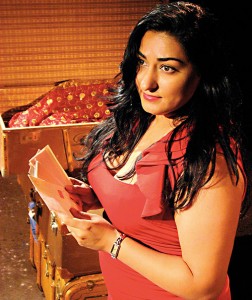New Orleans is a city of risks. She sits in a bowl, mostly below sea level, and geography funnels hurricanes—Katrina, most famously—right in her direction. They’ve made direct hits on the city 49 times since its founding in 1718.
The astute, do-it-yourself theatre scene of New Orleans knows more about risk than any comparable arts community in America—but it tended, pre-Katrina, toward competitiveness and animosity. These days, by contrast, artists of all stripes coalesce like never before around the annual New Orleans Fringe Festival, where risk is the rule rather than the exception.
Now in its sixth year, the Fringe, scheduled Nov. 20–24, is revealing itself as a gritty gem amongst the array of such festivals across the U.S. Against a backdrop of seemingly endless parades, nonstop music and the hum of general revelry, the N.O. Fringe has made itself relevant both artistically and as a unifying, community-strengthening force. It is, as one critic declared in the city’s Internet-challenged, no-longer-daily hometown newspaper, the Times-Picayune, “a cultural beacon for those who follow the post-Katrina theatre renaissance in New Orleans.”
Performances come from the biggest theatres in town, like the professional Southern Rep company and the recently resuscitated Le Petit Theatre du Vieux Carre, alongside complete novices, such as this year’s Plastic Shamans, a fresh-out-of-college troupe from Baton Rouge that will offer an ambitious work of immersive theatre called Sacred Waste. Established N.O. ensembles like Goat in the Road (featured on the cover of the March ’13 issue of AT) and Skin Horse Theater continue their ongoing homage to the city and the region, the former with an opus called This Sweaty City, the latter with Nocturnes (I-III), a haunting tone-poem inspired by space exploration.

The festival is more than a showcase for New Orleans talent. This year the Pakistani-Norwegian comic Shabana Rehman engages with traditional societal roles in For Kingdom and Fatherland, and the New Hampshire–based Nashua Theatre Guild performs City of Bones, based on August Wilson’s work and incorporating voodoo ritual and African dance.
The N.O. Fringe uses a juried peer-review selection process envisioned by co-founders Kristen Evans (who has a background in community organizing) and Damon Rosenzweig (a specialist in evaluation methodologies). This theatrically astute duo considers the jurors they work with “guardians of the fringe” and urge them to select performances based on the core values of quality, inclusiveness and “fringiness.”
Fringiness? “That’s part of being in New Orleans,” elaborates Rosenzweig, who also holds the title of Fringe development coordinator. “There’s so much wild and deep meaning and culture and soul in every crack and crevice of life here—you sprinkle the right kind of magic dust and, whoosh, you get an explosion of creativity and spontaneity and authenticity!”
Most fringe festivals have some version of BYOV (bring your own venue), and in New Orleans, artists willing to incorporate adventurous and unique spaces into their visions are likely to reap rewards in terms of attention and attendance. This year BYOV shows outnumber regular shows by about two to one. The assumptive bias that theatre must happen in a theatre space seems to have little hold on N.O. theatre patrons—they’ll go willingly to warehouses, alleys, abandoned buildings, open fields, wherever the art takes them.
One BYOV show on the Fringe lineup, by the Mudlark Puppeteers, is situated in the company’s laboratory space, which formerly housed a greengrocer and, before that, a brothel. Appropriately, the show is Blue Book: A Dioramic Guide to the Days and Ways of Storyville, about the city’s famous red-light district. A troupe called Chemical Marriage will perform Invocation of the Androgynous Muse behind a pub on St. Claude Street, inviting audience members to play musical instruments that will inspire a visual artist to paint for as long as the music plays—up to 10 hours.
Companies utilizing more conventional spaces and time frames include the increasingly visible NOLA Project, which is staging artistic director A.J. Allegra’s Oregon Trail—wherein the iconic and ripe-for-parody ’80s educational video game is given a humanizing send-up—at the bar-cum-theatre AllWays Lounge. Other Fringe-managed venues range include the Marigny Opera House, a Romanesque church built in 1853, which has preserved its original architecture (sans the frescoes destroyed by Hurricane Betsy in 1965), and, a block away, the Den of Muses, a vast warehouse working space where huge (and often explicitly racy) Mardi Gras floats are constructed. The Den’s open floor plan provides a default performance space, where half-assembled floats for next year’s parades seem to peer from the sidelines at audience and performers simultaneously.
The least risky event on the Fringe agenda is the traditional parade that will mark the peak of the five days of performance: The procession wends its way through the Bywater and Marigny neighborhoods, and within the parade-demarcated territory, local art galleries and neighborhood residents turn their properties into ad hoc yard art and sculpture gardens for Fringe-goers. The practice organically interweaves patrons with the places of performance, and both of them to the larger community—much as theatre, one might conjecture, holds all the other artistic genres in its arms.
Justin Maxwell teaches playwriting at the University of New Orleans.


